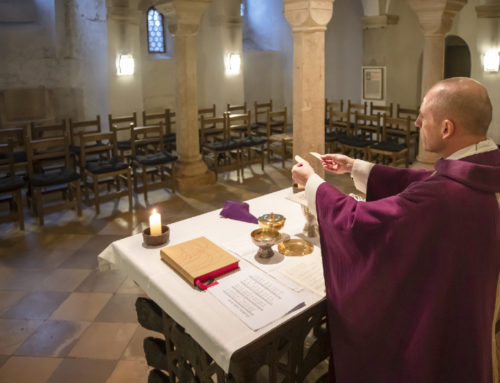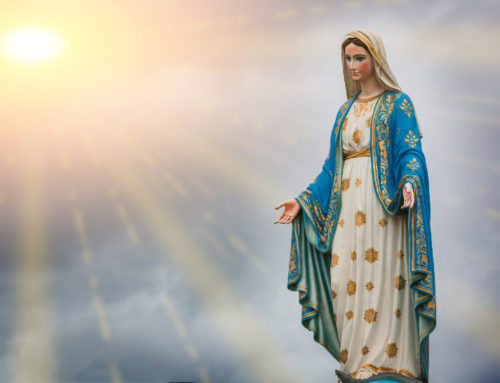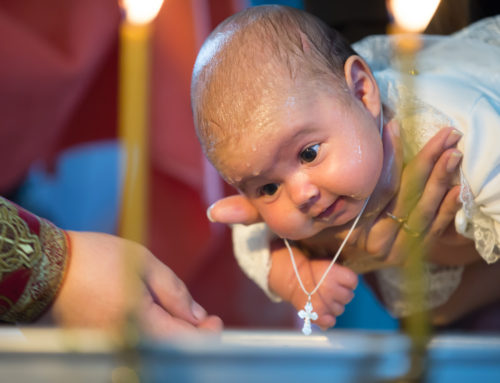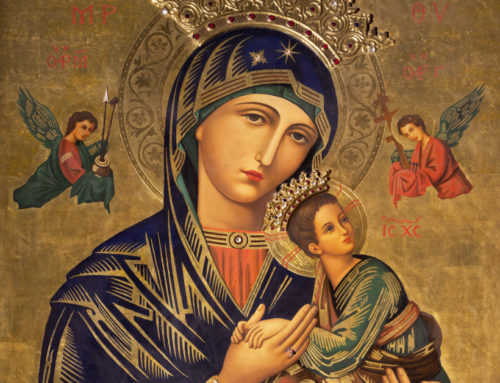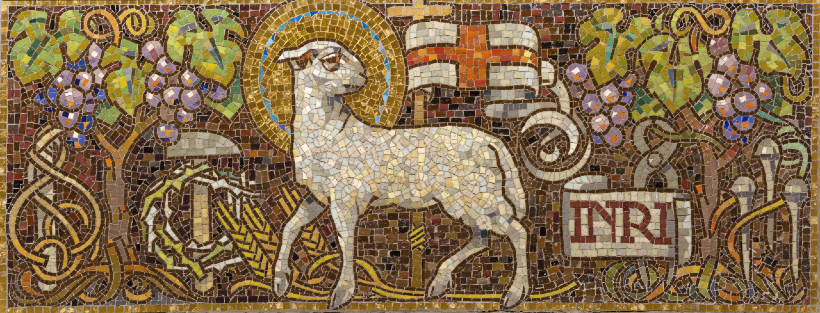
photo of the symbolic mosac of Lamb of God by Renáta Sedmáková
When you say that the Maronites were never “out of communion” with Rome, what does that mean?
As we’ve already seen, following the Schism of 1054, the Orthodox Churches slowly broke communion with the Church of Rome. There were two churches that never broke communion and that do not have orthodox counterparts. These are the Italo-Albanian Church located in Italy and the Maronite Church, which today is primarily in Lebanon.
The origins of the Maronite Church can be reconstructed only with some difficulty. Following the Council of Chalcedon (AD 451), there were arguments between the Monophysites and the Chalcedonians. It is certainly true that a community grew up in the mountain region of Lebanon under the leadership of Saint John Maron, who had been elected the first patriarch of the Maronites.
While tradition holds that they never “broke communion” with Rome, they were out of contact with Rome until Patriarch Jeremiah brought his group into contact with the Crusaders. Later he came to the Lateran Council in 1215. This was a direct result of the “rediscovery” of the Maronites during the Crusades. In fact, there is a famous painting of Jeremiah celebrating the Mass there that was commissioned by Pope Innocent III and restored by Pope Innocent XIII. So, while they were never “out of communion,” they were most certainly out of contact.
There’s an Eastern Catholic Church near us whose members are Arabs. Who are they?
Arab Christians are mostly members of the Melkite or Maronite Churches, but some may be members of the Chaldean Church found in Iraq and Iran.
Christianity is a religion that finds its origins in the Middle East. Many of the early converts to Christianity were, in fact, people whom today are known as Arabs. Large concentrations of Arab Christians populated the Middle East until the establishment of the Muslims. Even today there are large groups of Arab Christians in Jordan, Syria, Lebanon, Egypt, and Palestine.
Many Arab Christians have migrated to other parts of the world. They are found on virtually every continent and in every country. In the United States, large groups of Arab Christians are found in Southern California, Michigan (especially around Detroit), and New England. Smaller groups are present in virtually every major city.
Because the Eastern Catholic Churches are not as prevalent as the Roman Catholic Church, many Arab Christians attend Latin Masses instead of going to the Eastern or Syriac Church of which they are members.
Do the Eastern Catholic Churches use Latin, or do they use English or some other language?
Latin is the theological and liturgical language of the Roman Catholic Church, but it is not used in other Catholic Churches. In general, Eastern Churches use the language of the people where they are located. Thus, Arabic is used Arab countries, French is used in French-speaking lands, and English is used in America, England, and other English-speaking places.
There are “sacred languages” used in the Eastern Churches that function much as Latin does in the Roman Catholic Church. Among these are Old Church Slavonic, used in the Russian, Ukrainian, and Ruthenian Churches; Ge’ez, used in the Church of Ethiopia; and Greek, which is found to some degree in virtually all of the Eastern Catholic Churches.
Excerpt from Faulk, Edward. 101 Questions and Answers on Eastern Catholic Churches. (Paulist Press: Mahwah, NJ) 2007.

